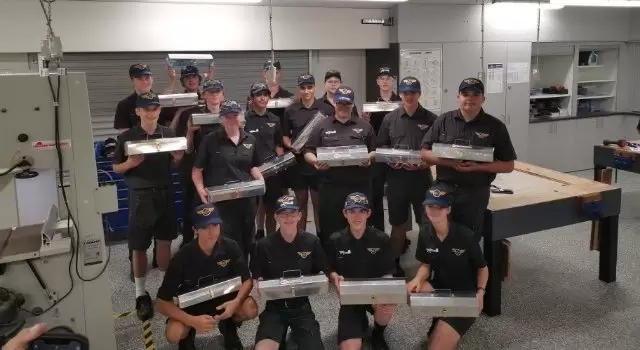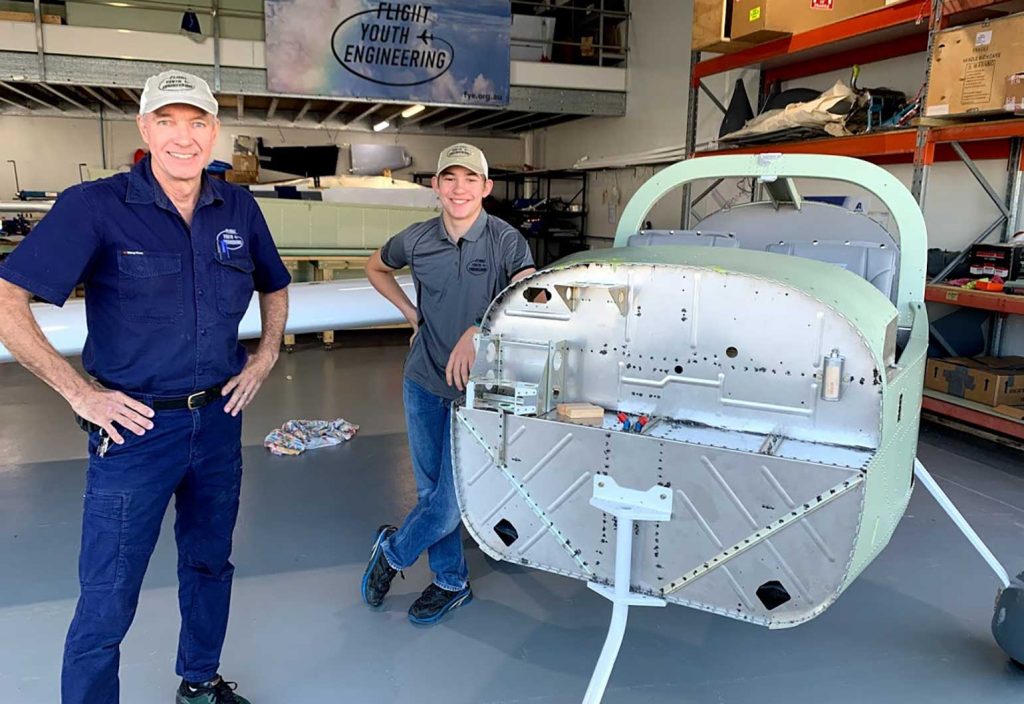Secondary school students are learning how to build and fly an aircraft as part of an educational project run by not-for-profit organisation Flight Youth Engineering (FYE).
The Queensland-based initiative aims to inspire students to take an interest in engineering, the aviation industry and, possibly, careers they have not considered before, said pilot and co-director Paul Reddish.
Reddish has been involved in the aviation industry for 30 years and worked as a volunteer flight instructor for Australian Airforce cadets.
Mentors, all of whom have built their own aircraft, guide students through the beginning-to-end construction of a modern light sport aircraft — the Vans Aircraft RV-12iS — with full glass instrumentation, two-axis auto-pilot and the latest safety features.
FYE co-director, private pilot and aircraft chief builder Ashley Miller told create that certified engineers are also on call. Private pilot and lawyer Michael Allen is the third member of the founding team.
According to Miller, FYE absorbs all of the risk for schools from an insurance point of view.
Volunteer mentor, student pilot and chemical engineer Anh Tran said the program uses hands-on experience to build an understanding of aviation mechanics and safety.
“Getting every nut and bolt in the right place is essential, because we are aiming to build a plane to a specification that is flyable and insurable,” said Tran, who trained to build a plane with FYE.
“It’s also about the dynamics of open learning, and being a teenager and having fun.”

A dream build
FYE currently has two home-schooled students completing an aircraft at Redcliffe Aerodrome, and a second group of about 20 students from St Columban’s College at Caboolture.
“We chose the Vans RV12iS for our program because it is designed from the ground up and has no use of toxic chemicals,” Reddish said.
The planes take 700 hours to construct and cost about $120,000. To cover the costs, students conduct fundraising activities, and some sponsors have also come onboard.
Fifteen-year-old Daniel Strydom is on the home school team and said he was asked by friends 18 months ago to get involved with the project. He thinks it’s the best thing he’s ever done.
“I have wanted to be a pilot since I was eight and the idea of building and flying a plane was a dream,” he said.
“Now I am figuring out ways to be a pilot and a licensed aircraft mechanical engineer because doing the engineering work on the plane has made me realise I fit here.”
Currently in year 11, Strydom has been working on the first build since November last year with fellow student Jonathan Kelly. He said the fibreglassing and fuel line work had been particularly challenging.
“The fibreglassing is an artistic style of work where you must get the shape just right, while the fuel line is also very specific and, if you make one mistake, you have to throw away the tubing and start again,” Strydom said.
“Ashley [Miller] has helped me understand the technicalities of how to make parts, how they work, and where to put them in the plane.”
Celebrating learning
Miller said failure was celebrated, if it was teamed with learning.
“For example, when students had to make the fuel lines out of aluminium 3032 aircraft-grade fuel tubing, flaring and bending it correctly, with the right tolerances, was critical,” he said.
“Students learn a lot about fibreglassing by touch and feel, and sanding, to get a pleasing radius and shape.
“We wear a quality assurance hat, as well as a building hat, so we had to have a minute’s silence for some of the parts.”
At the end of the build, students will keep the planes for a short period of time so they can experience maintaining it, then the aircraft will be sold on and the money put into a fund for the next build.
FYE is currently looking for students, mentors and sponsors in other states and territories.
“We want to continue energising aviation, one school, one student and one aircraft at a time,” Miller said.
